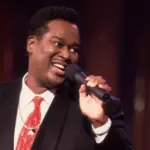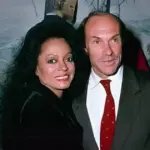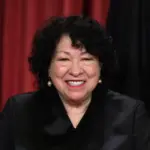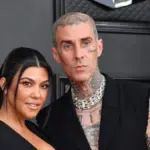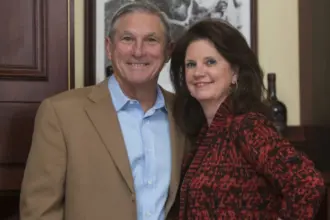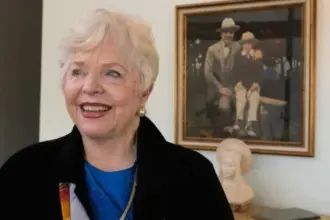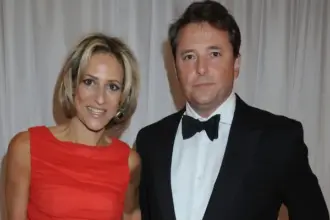Sonia Sotomayor is the first Latina and third woman to serve on the U.S. Supreme Court. Nominated by President Barack Obama in 2009, she brings extensive judicial experience spanning district court, appellate court, and Supreme Court service.
When Sonia Sotomayor took her seat on the Supreme Court in August 2009, she became the first Hispanic justice in the court’s history. Her path from a Bronx housing project to the highest court in America represents more than personal achievement. It shows what determination can accomplish when combined with opportunity.
At 71, Sotomayor remains a consistently liberal voice on an increasingly conservative court. She writes passionate dissents and fights for those who lack power. Her story continues to inspire young people who see themselves reflected in her background.
This article explores her early life, education, judicial career, and lasting impact on American law. You’ll learn about her major rulings, her writing style, and why she matters to millions of Americans.
From the Bronx to Princeton
Growing Up in Public Housing
Sonia Maria Sotomayor was born June 25, 1954, in the Bronx, New York, to parents who moved from Puerto Rico. Her father, Juan Sotomayor, worked as a tool and die worker with only a third-grade education and did not speak English. Her mother, Celina Báez, worked as a telephone operator and then as a practical nurse.
At age eight, Sotomayor was diagnosed with Type 1 diabetes, requiring daily insulin injections. Her father died the following year. Her mother worked long hours to support Sonia and her younger brother. The television show Perry Mason influenced her decision to become a lawyer.
Academic Excellence
Sotomayor graduated summa cum laude from Princeton University in 1976, earning the university’s highest academic honor. She then attended Yale Law School, where she served as an editor of the Yale Law Journal and graduated in 1979.
Her academic achievements came through hard work and focus. She credits affirmative action policies for opening doors that might otherwise have remained closed.
Building a Legal Career
Early Professional Years
Sotomayor served as Assistant District Attorney in the New York County District Attorney’s Office from 1979 to 1984. Twenty-five-year-old Sotomayor helped put major criminals behind bars, including in the high-profile Tarzan murder case.
She then worked at Pavia & Harcourt, where she served as an associate and then partner from 1984 to 1992. Her practice had a significant concentration in intellectual property law, including trademark, copyright, and unfair competition issues.
The Judge Who Saved Baseball
President George H.W. Bush nominated Sotomayor to the U.S. District Court for the Southern District of New York in 1991, and she was confirmed in 1992. She presided over roughly 450 cases over six years.
Among other matters, she ruled on the dispute between Major League Baseball and the players’ union, ending a 232-day strike an hour before the 1995 season was about to begin. Her decision brought her national attention as “the judge who saved baseball”.
Appeals Court Service
President Bill Clinton nominated her to the U.S. Court of Appeals for the Second Circuit in 1997. The appointment was slowed by the Republican majority in the Senate because of concerns that the position might lead to a Supreme Court nomination, but she was confirmed in 1998.
On the Second Circuit, Sotomayor heard appeals in more than 3,000 cases and wrote about 380 opinions. She also taught law at New York University and Columbia Law School during this period.
Supreme Court Appointment
Historic Nomination
In May 2009, President Barack Obama nominated Sotomayor to the Supreme Court following Justice David Souter’s retirement. Her confirmation hearings before the Senate Judiciary Committee went smoothly, and she was confirmed by the Senate in August 2009 by a vote of 68 to 31.
She faced initial scrutiny over past statements and questions about her diabetes. Yet her qualifications proved undeniable. She brought more federal judicial experience to the Supreme Court than any justice in 100 years, and more overall judicial experience than anyone confirmed for the Court in the past 70 years.
Major Rulings and Opinions
Sotomayor has participated in landmark decisions during her tenure. In 2011, she wrote the majority opinion in J.D.B. v. North Carolina, which found that a child’s age is relevant for Miranda warning purposes when determining whether a person is in police custody.
She was in the majority on several notable rulings in 2012, including a decision that upheld most provisions of the Patient Protection and Affordable Care Act. In June 2015, she joined the majority in Obergefell v. Hodges, which made same-sex marriage legal in all 50 states.
A Voice for the Powerless
Powerful Dissents
Sotomayor’s dissents have grown more frequent in recent years as the court’s conservative majority reshapes constitutional law. “I refuse to be a bystander,” Sotomayor said. “I get up every morning ready to fight, every morning to dissent as vehemently as I humanly can”.
Recent examples show her fighting spirit:
- In October 2025, she warned the court is allowing “extraordinary misconduct to stand” after justices declined to take up a death penalty case involving allegedly biased jurors
- In June 2025, she accused her colleagues of “rewarding lawlessness” in a fiery dissent about the Trump administration’s immigration policies
- She called presidential immunity “a made-up doctrine” in her dissent on Trump v. United States
Writing for the Future
Sotomayor explained that sometimes her audience is lower court judges, giving them additional ideas to consider. In other cases, her dissents are written for a future court to cite when they reconsider cases she believes were decided wrong.
“I know I’m always thinking not about the winners, but about the losers,” Sotomayor said. “Because once I forget them, then I’ve stopped being a human being”.
Working Across Ideological Lines
Maintaining Relationships
Despite vehement disagreements, Sotomayor maintains rapport with her colleagues. “Like me, every one of them is devoted to their families, to their spouses, to their children,” she said.
“You have to stop thinking that when somebody thinks something different than you do, that they’re necessarily bad people because of that. And good people do bad things”.
She acknowledged the emotional toll of being in the minority. “There are moments I’m angry, deeply angry, and other moments I’m deeply sad. But I also realize I have to live with them”.
“I think most of my colleagues like me and they like me because I like them as people, even though I think they’re crazy as judges,” Sotomayor said.
Beyond the Bench
Community Engagement
In September 2025, Sotomayor discussed her new children’s book during an interview, saying “the power of change is in people” rather than courts. Her latest book, “Just Shine!: How to Be a Better You,” is a heartfelt tribute to her late mother, Celina Báez.
Sotomayor has maintained a public presence since joining the federal judiciary, giving over 180 speeches between 1993 and 2009, about half focused on issues of ethnicity or gender or delivered to minority or women’s groups.
Recent Recognition
In 2025, she received the Colin L. Powell Distinguished Leadership Award from The City College of New York, which recognizes individuals who embody values of integrity, humility, humor, pragmatism, and common sense.
In May 2025, she received the Lifetime Liberty Achievement Award from the Tort Trial and Insurance Practice Section for taking leadership roles in promoting diversity in the legal profession.
Her Judicial Philosophy
Practical Interpretation
In her 1997 confirmation hearing, Sotomayor said “I don’t believe we should bend the Constitution under any circumstance”. Yet she appreciates the real-world implications of judicial rulings, showing sensible practicality in evaluating law enforcement actions.
Fighting for Justice
“I tell law students if you’re not used to fighting losing battles, don’t become a lawyer. Our job is to stand up for people who can’t do it themselves. Our job is to be the champion of lost causes,” Sotomayor said.
She draws inspiration from history. Speaking about the Dred Scott case, she told an audience “He never did live long enough to appreciate that he helped the civil rights movement by struggling. He got us the 13th Amendment, ending slavery in the United States”.
Impact and Legacy
| Milestone | Year | Significance |
|---|---|---|
| District Court Judge | 1992 | Appointed by President George H.W. Bush |
| “Saved Baseball” | 1995 | Ended 232-day Major League Baseball strike |
| Appeals Court Judge | 1998 | Confirmed to Second Circuit |
| Supreme Court Justice | 2009 | First Latina Supreme Court Justice |
| Swore in Kamala Harris | 2021 | Historic ceremony with first woman VP |
Sotomayor made history for being the first Hispanic and the first woman of color to reach the Supreme Court. Her presence on the bench matters to communities that rarely saw themselves represented in positions of power.
She serves as a role model for young people facing obstacles. Her story demonstrates that background doesn’t determine destiny.
FAQs
Who was the first Latina Supreme Court Justice?
Sonia Sotomayor became the first Latina Supreme Court Justice when she was confirmed in August 2009.
What is Sonia Sotomayor known for?
She’s known for passionate dissents defending civil rights, her concern for criminal defendants, and bringing extensive judicial experience to the Court.
Where did Sonia Sotomayor grow up?
Sotomayor was raised in a housing project in the Bronx after her parents moved from Puerto Rico.
What cases did Sonia Sotomayor work on?
She wrote the majority opinion in J.D.B. v. North Carolina and voted with the majority on the Affordable Care Act and same-sex marriage cases.
Is Sonia Sotomayor still on the Supreme Court?
Yes, she continues serving as an Associate Justice and remains the senior liberal member of the Court.
Conclusion
Sonia Sotomayor represents what’s possible when talent meets opportunity. Her journey from the Bronx to the Supreme Court inspires millions who face similar challenges. She didn’t just break barriers. She holds the door open for others to follow.
Her dissents will shape future courts. Her commitment to justice continues driving change. Whether you agree with her judicial philosophy or not, her impact on American law remains undeniable.
“This is our time to stand up and be heard,” she tells audiences. For Sotomayor, the fight for equal justice never ends. Neither does her belief that ordinary people can achieve extraordinary things.
